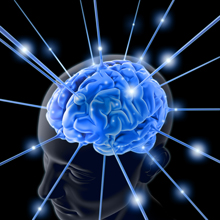Majority of us keep a horrifying picture about Shock treatment used for the cure of mental illnesses. The bad credit goes mainly to the movies that mislead us and give a feeling that it is some kind of torture or punishment given to the most violent of mental patients.
So, here we are going to have a talk on the same Shock Treatment that I hope will untether you off some misconceptions.
'Shock treatment' is just a nickname of this method. Psychiatrists call it as 'Electroconvulsive Therapy' or simply ECT. It will be interesting to know that ECT is the first discovered meaningful treatment method in psychiatry (for movies have always picturized it as a last resort). For the sake of a little history, there was no meaningful treatment for mental illness around just 70 years ago. Von Meduna, a Hungarian psychiatrist, observed that epilepsy and schizophrenia rarely coexist. Even if they did, the seizures (or fits, loosely speaking, the sudden movement of muscles) associated with epilepsy reduced the severity of psychosis. This lead him to develop a treatment for psychosis: to induce seizures artificially using drugs. But use of drugs had many limitations because there was no considerable control over the way seizures occurred. Thereafter, Carletti and Bini, two Italian psychiatrists discovered that electricity can be used to induce seizures in a much controllable way. In 1938, the first experiment of ECT was done on humans, to be found a great success.
ECT is not at all a cruel treatment. Before applying ECT to a patient, he is always undergone a 'fitness test' including EEG, and X-ray. To those who think it is a torture, ECT is never conducted on a conscious patient but is always given after an anesthesia. That means you don't feel any pain at all. Also drugs are given to prevent very violent movement of muscles during seizures. While doing all these pre-ECT steps, the patient is allowed to breath pure oxygen (a process called hyperventillation). The amount of current passed is only around 0.5-0.8 ampere and that is for less than 4 seconds, using an apparatus called psychotron. This current never reaches the brain. It just flows through the scalp tissues and so there is no 'struck by lightning' type effects as we see in movies. This current can stimulate brain activity. It is this stimulated brain activity and NOT the electrical stimulus that causes the sudden muscular movements. When the effect of anesthesia wears off, the patient would wake up comfortably.
ECT produce recovery faster than drugs. It is also used in drug-resistant subjects (that is if patient does not respond to medicine) It is not necessarily meant for only the very violent and uncooperative patients (for such patients ECT will be the only way) but is also prescribed for very depressed patients. Psychiatrists say that patients who have received ECT find it less frightening than going to a dentist!
One more interesting fact: despite being a 70 year old and globally used method, no one knows exactly how ECT works in human body!
So, here we are going to have a talk on the same Shock Treatment that I hope will untether you off some misconceptions.
'Shock treatment' is just a nickname of this method. Psychiatrists call it as 'Electroconvulsive Therapy' or simply ECT. It will be interesting to know that ECT is the first discovered meaningful treatment method in psychiatry (for movies have always picturized it as a last resort). For the sake of a little history, there was no meaningful treatment for mental illness around just 70 years ago. Von Meduna, a Hungarian psychiatrist, observed that epilepsy and schizophrenia rarely coexist. Even if they did, the seizures (or fits, loosely speaking, the sudden movement of muscles) associated with epilepsy reduced the severity of psychosis. This lead him to develop a treatment for psychosis: to induce seizures artificially using drugs. But use of drugs had many limitations because there was no considerable control over the way seizures occurred. Thereafter, Carletti and Bini, two Italian psychiatrists discovered that electricity can be used to induce seizures in a much controllable way. In 1938, the first experiment of ECT was done on humans, to be found a great success.
 |
| A psychotron used to control ECT |
ECT produce recovery faster than drugs. It is also used in drug-resistant subjects (that is if patient does not respond to medicine) It is not necessarily meant for only the very violent and uncooperative patients (for such patients ECT will be the only way) but is also prescribed for very depressed patients. Psychiatrists say that patients who have received ECT find it less frightening than going to a dentist!
One more interesting fact: despite being a 70 year old and globally used method, no one knows exactly how ECT works in human body!
































